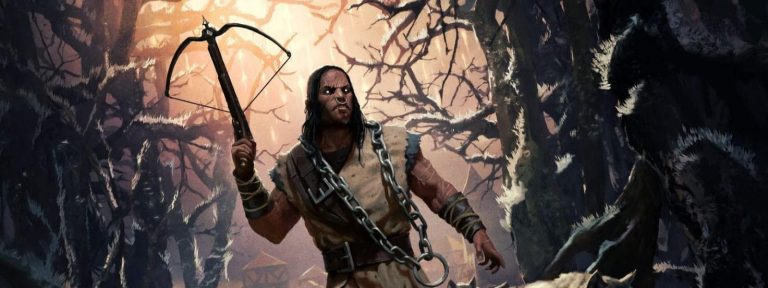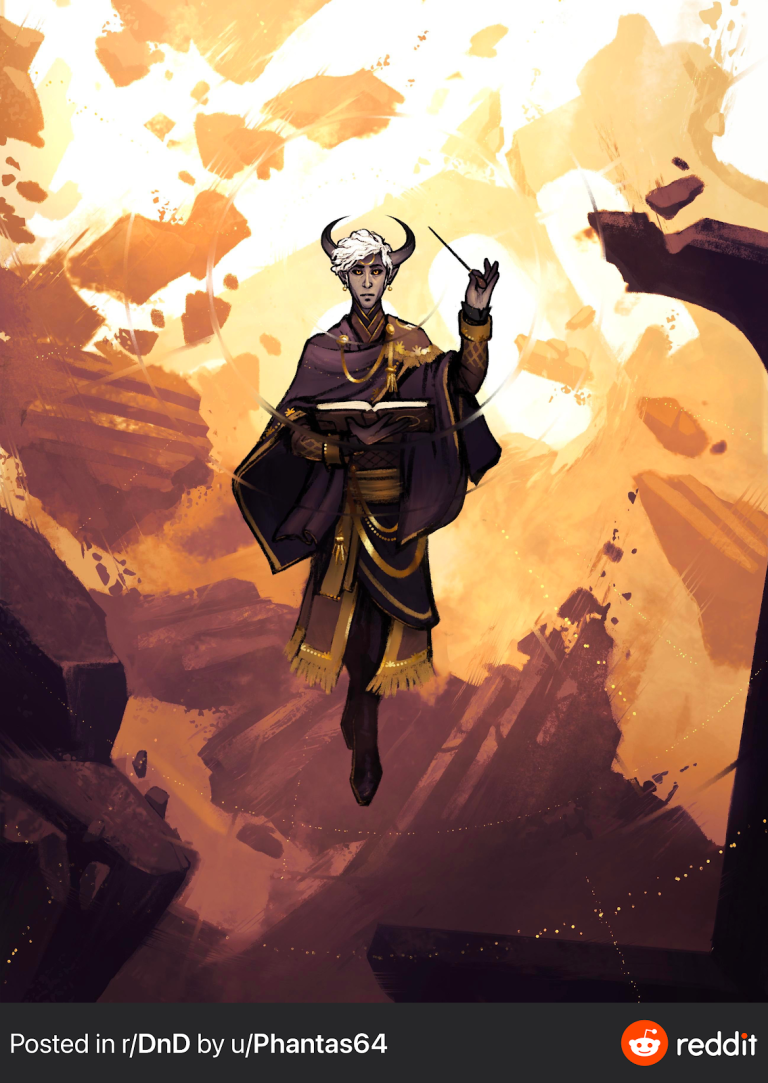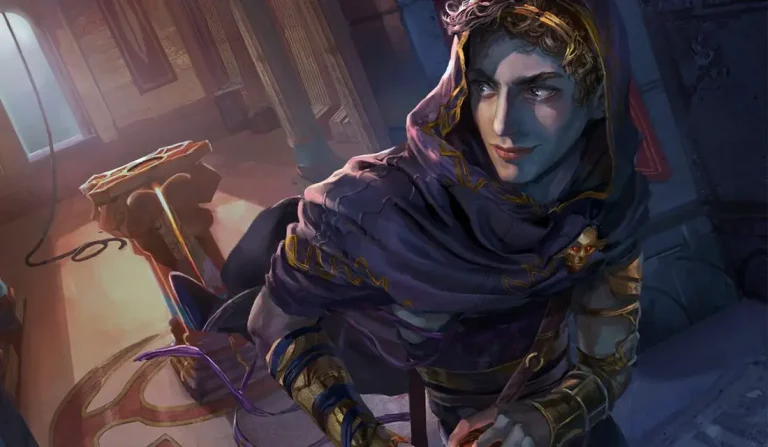D&D 5e: Way of the Four Elements Monk Guide

D&D 5e: Way of the Four Elements Monk Guide
Intro/Role in Party
The Way of the Four Elements Monk is the second most mocked subclass in the Player’s Handbook; the first was the original version of the Beast Master Conclave Ranger. However, the Beast Master at least had things going for it, like the core ranger features, and you could do something with a few of the creature options you had. The Way of the Four Elements Monk has even less going for it.
The Four Elements Monk was seemingly intended as the monk equivalent of an Eldritch Knight Fighter or an Arcane Trickster Rogue: however, unlike these subclasses, you don’t get spell slots, you instead have to spend uses of your other class features to use your subclass features. It would be like if the Eldritch Knight could cast Burning Hands, but it cost them their action surge.
Your role in a party will mostly be hitting people with a stick and making unarmed strikes: you can be okay at this at less optimized tables, but your damage will fall behind at tables with strong damage dealers. Don’t forget to hold your versatile weapon in two hands to deal extra damage!
Epic
Good
Meh
Bad
The Way of the Four Elements Monk subclass is found in the Player’s Handbook. Click here to pick up your own copy of the Player’s Handbook!
Way of the Four Elements Monk Features
Disciple of the Elements
When you choose this tradition at 3rd level, you learn magical disciplines that harness the power of the four elements. A discipline requires you to spend ki points each time you use it.
You know the Elemental Attunement discipline and one other elemental discipline of your choice. You learn one additional elemental discipline of your choice at 6th, 11th, and 17th level.
Whenever you learn a new elemental discipline, you can also replace one elemental discipline that you already know with a different discipline.
Casting Elemental Spells. Some elemental disciplines allow you to cast spells. See chapter 10 for the general rules of spellcasting. To cast one of these spells, you use its casting time and other rules, but you don’t need to provide material components for it.
Once you reach 5th level in this class, you can spend additional ki points to increase the level of an elemental discipline spell that you cast, provided that the spell has an enhanced effect at a higher level, as Burning Hands does. The spell’s level increases by 1 for each additional ki point you spend. For example, if you are a 5th-level monk and use Sweeping Cinder Strike to cast Burning Hands, you can spend 3 ki points to cast it as a 2nd-level spell (the discipline’s base cost of 2 ki points plus 1).
The maximum number of ki points you can spend to cast a spell in this way (including its base ki point cost and any additional ki points you spend to increase its level) is determined by your monk level, as shown in the Spells and Ki Points table.
5th-8th: 3 ki
9th-12th: 4 ki
13th-16th: 5 ki
17th-20th: 6 ki
This is a bad feature, and it’s the only feature you get. To do anything with this aside from having a bootleg version of prestidigitation, you need to spend ki: and a lot of the things you can do are insultingly bad. Here’s a rundown of the elemental disciplines: keep in mind that you only know 2-5 of these depending on your level. Funnily enough, nothing is stopping you from swapping out Elemental Attunement with a different discipline at 6th level, so you can replace it with something else if you want. Lastly, remember that all the action casting time options let you use Ki Empowered Strikes from Tasha’s Cauldron of Everything, so you can make a weapon attack as a bonus action when you use them.
Breath of Winter
Prerequisite: 17th Level
You can spend 6 ki points to cast Cone of Cold.
Cone of Cold is not a great spell by 17th level, and 6 ki is a lot, but at least you have a high ki reserve by this point and this is an area of effect option.
Clench of the North Wind
Prerequisite: 6th Level
You can spend 3 ki points to cast Hold Person.
Just use Stunning Strike!
Elemental Attunement
You can use your action to briefly control elemental forces within 30 feet of you, causing one of the following effects of your choice:
Create a harmless, instantaneous sensory effect related to air, earth, fire, or water such as a shower of sparks, a puff of wind, a spray of light mist, or a gentle rumbling of stone.
Instantaneously light or snuff out a candle, a torch, or a small campfire.
Chill or warm up to 1 pound of nonliving material for up to 1 hour.
Cause earth, fire, water, or mist that can fit within a 1-foot cube to shape itself into a crude form you designate for 1 minute.
Prestidigitation, except you, can’t even make people’s food taste weird as a prank.
Eternal Mountain Defense
Prerequisite: 17th Level
You can spend 5 ki points to cast Stoneskin, targeting yourself.
Stoneskin is a concentration spell, and it has an expensive material component, and this doesn’t even provide the component for you. You get Empty Body at 18th level, which is just better in every way except for the duration.
Fangs of the Fire Snake
When you use the Attack action on your turn, you can spend 1 ki point to cause tendrils of flame to stretch out from your fists and feet. Your reach with your unarmed strikes increases by 10 feet for that action, as well as the rest of the turn. A hit with such an attack deals fire damage instead of bludgeoning damage, and if you spend 1 ki point when the attack hits, it also deals an extra 1d10 fire damage.
You spend 1 ki to give yourself more reach with unarmed strikes, which unless you’re high level, are worse than just hitting people with a quarterstaff. But if you are high level, more enemies are resistant to fire damage than your magical punches. You can also spend 1 more ki to deal a tiny amount of extra damage, which is bad.
Fist of Four Thunders
You can spend 2 ki points to cast Thunderwave.
It’s not a good area of effect damage option, but it’s passable at low levels, and the pushing effect can be helpful.
Fist of Unbroken Air
You can create a blast of compressed air that strikes like a mighty fist. As an action, you can spend 2 ki points and choose a creature within 30 feet of you. That creature must make a Strength saving throw. On a failed save, the creature takes 3d10 bludgeoning damage, plus an extra 1d10 bludgeoning damage for each additional ki point you spend, and you can push the creature up to 20 feet away from you and knock it prone. On a successful save, the creature takes half as much damage, and you don’t push it or knock it prone.
You do some damage and some forced movement, but at higher levels, this is worse than just attacking normally
Flames of the Phoenix
Prerequisite: 11th Level
You can spend 4 ki points to cast Fireball.
Fireball is a good spell, but it’s less good by 11th level, and it costs a lot of ki. You can clean up way more minions with this than a Shatter would get rid of, and it’s not much worse than Cone of Cold despite the lower cost and level requirement, so this may be the best area of effect option this subclass gets. However, don’t take this in campaigns with lots of fire resistant or immune enemies like devils and demons.
Gong of the Summit
Prerequisite: 6th Level
You can spend 3 ki points to cast Shatter.
Shatter is somewhat of an underwhelming spell for its level, and you’re 6th level. You probably won’t have many good chances to use this, but it is an area of effect damage option that could be useful if there are a ton of creatures.
Mist Stance
Prerequisite: 11th Level
You can spend 4 ki points to cast Gaseous Form, targeting yourself.
Highly circumstantial spell: just have the wizard do something instead if there’s a situation where casting this might be useful.
Ride the Wind
Prerequisite: 11th Level
You can spend 4 ki points to cast Fly, targeting yourself.
You’re almost certainly a melee character, so being able to do something instead of nothing when flying enemies attack you from above could be useful. It is concentration, but if you lose concentration, you can still use Slow Fall.
River of Hungry Flame
Prerequisite: 17th Level
You can spend 5 ki points to cast Wall of Fire.
Other characters have had Wall of Fire since level 7, but if your party has a lot of forced movement options… it’s okay.
Rush of the Gale Spirits
You can spend 2 ki points to cast Gust of Wind.
This spell is only good in a hallway and for keeping people away from you. You are probably a melee character. You want to be able to walk up to enemies and hit them.
Shape the Flowing River
As an action, you can spend 1 ki point to choose an area of ice or water no larger than 30 feet on a side within 120 feet of you. You can change water to ice within the area and vice versa, and you can reshape ice in the area in any manner you choose. You can raise or lower the ice’s elevation, create or fill in a trench, erect or flatten a wall, or form a pillar. The extent of any such changes can’t exceed half the area’s largest dimension. For example, if you affect a 30-foot square, you can create a pillar up to 15 feet high, raise or lower the square’s elevation by up to 15 feet, dig a trench up to 15 feet deep, and so on. You can’t shape the ice to trap or injure a creature in the area.
You can go full Minecraft and build things out of ice with this, even mid-combat. There are limitations, and you can’t trap creatures (it’s unclear if a circular wall with no roof counts as trapping someone), and it’s up to your DM how durable the ice is, but this can be useful in some situations.
Sweeping Cinder Strike
You can spend 2 ki points to cast Burning Hands.
Just like Thunderwave but it covers fewer squares and has no pushing. Ignore this one.
Water Whip
You can spend 2 ki points as an action to create a whip of water that shoves and pulls a creature to unbalance it. A creature that you can see that is within 30 feet of you must make a Dexterity saving throw. On a failed save, the creature takes 3d10 bludgeoning damage, plus an extra 1d10 bludgeoning damage for each additional ki point you spend, and you can either knock it prone or pull it up to 25 feet closer to you. On a successful save, the creature takes half as much damage, and you don’t pull it or knock it prone.
This is only good before level 5 since 3d10 is not much damage. You can knock flying creatures out of the sky with this or give allies advantage by knocking a creature prone, but they have to fail a save. Fine at low levels but not great, and it’s bad at high levels.
Wave of Rolling Earth
Prerequisite: 17th Level
You can spend 6 ki points to cast Wall of Stone.
Wall of Stone is a strong spell, even if it’s overshadowed by Wall of Force. This might be the best of the elemental disciplines. Still, you are eight levels late to the party, and there is a dexterity save if you want to try and trap a creature inside the wall. One last thing though: because you regain ki on short rests, you can cast more Wall of Stone spells per day than a wizard if you take a ton of short rests, so if you’re 17th level and someone has to build some fortifications… you are the right party member for the job.
Strengths
Not much, honestly. You get a little bit of versatility, but normal half spellcasters, third spellcasters, full spellcasters, and weapon-users with solid subclasses will have more versatility than you. You might be really happy if a battle takes place on top of a glacier or a body of water though because Shape the Flowing River can help a lot there. You won’t be amazing in a nautical or winter-themed campaign, but you’ll be better. If a dungeon master ever advertises a “Christmas one-shot”, that might be a good time to try this subclass.
Weaknesses
The underwhelming options mostly leave you with the core monk abilities: Stunning Strike is okay, but it costs damage output from Flurry of Blows to use it. Your improved movement speed would be good if you were powerful enough to do something with that movement, but you’re not great at damage, and your saving throws don’t get strong until very high levels. Your defense against physical attacks is mediocre, but not awful.
Best Race Options
No race synergizes amazingly with the features of the Four Elements Monk, but there are some decent options:
The Genasi from Monsters of the Multiverse is a fun and thematic option. If you wanted to specialize in one element, why not dig in and get racial features related to that element? They’re all fine options, but the Earth Genasi gets Pass Without Trace and the Fire Genasi gets resistance to Fire, a common damage type in some campaigns. Pick your favorite of the four subraces.
The Fizban’s Chromatic Dragonborn is another wonderful option if you wanted to specialize in a certain element. You get resistance to your associated damage type, can breathe that damage type, and at 5th level you can become immune to it for a minute. Not bad.
The Wood Elf has longsword proficiency, and you can use the new Tasha’s feature to turn a longsword into a monk weapon, use the versatile property with it, and get a little more damage. But if you’re not using Tasha’s, the +2 to dexterity and +1 to wisdom are exactly the racial stat bonuses a monk wants.
Choosing the Right Skills
You’re a monk, and even though you’re not generally thought of as an expert in particular skills, you may still want some of these skills:
Acrobatics is useful if you want to do cool ninja flips, and for escaping grapples.
Perception is the most used skill in the game and prevents you from being surprised.
Medicine and Survival are situational, but they have their uses: you may take these if nobody else has them.
Stealth and Sleight of Hand may be useful if you want to be an elemental ninja.
If you want knowledge about the elemental planes, Arcana will give you some of that knowledge, which makes sense for an elemental-themed character.
You probably don’t have high charisma, but if you want to contribute to the mechanical side of social interactions, Insight will let you do that: and your wisdom is probably high enough to make you decently strong with this skill.
If you want to put on cool shows with your flashy monk abilities, Performance will make them more entertaining.
Fitting Feats
Elven Accuracy synergizes well with monks: you can’t hit hard, but if allies use spells and other abilities to give you advantage, you will hit almost 100% of the time. If you went wood elf, you can even use this while using a longsword in two hands, letting you hit with a d10 damage die and hit very consistently. This is good for boosting an odd dexterity score at level 4.
If you want to contribute more out of combat as a Four Elements Monk, you can take Ritual Caster. Your intelligence probably isn’t high enough for Wizard, but Druid is a fine pick too.
There are niche Sharpshooter and Great Weapon Master builds for monks that can perform surprisingly well, but you probably don’t want to use one of those if you’re playing this particular subclass. Try them with a Kensei or Shadow Monk build instead since their features support these kinds of builds.
Optimal Backgrounds
Unlike some classes and subclasses, there are no super powerful backgrounds for this character. Some still go along well with this subclass though:
Hermit is a common Monk background, and the Discovery feature has a lot of fun potential.
Far Traveler is a fun background you can use if you want your character to be from one of the elemental planes. There’s enormous roleplay potential here. Perfect with a Genasi race.
Setting-specific backgrounds that give spells are less powerful than usual since you don’t have a real spell list or real spell slots. But if you want some substantial mechanical benefit from your background, and your table allows these backgrounds, you can take Prismari Student, one of the Strixhaven backgrounds. The elemental theme works especially well, and you could cast the Shield spell once per long rest or pick something else.
Multiclassing Options
If you want to actually use your Four Elements features, you should probably take more monk levels so you’ll unlock new elemental disciplines and have the ki to use them. Because of this, no multiclass is stellar with the Four Elements monk. However, there are a few multiclassing options that can help you:
One level of fighter will give you proficiency in all weapons and a fighting style, which can be Dueling. Two will give you an action surge. Three levels give you a subclass, and there are good fighter subclasses like Battlemaster, Rune Knight, and Echo Knight. Rune Knight may be the best option since its features have an elemental theme and are rather potent.
One level of Genie Warlock will give you some real spell slots and some elemental themed features. Pick whichever sub-subclass corresponds to your favorite element, but Dao is probably the best option. You do need 13 charisma though.
If you want to leave Monk behind at high levels, Rogue levels aren’t a bad choice. Extra Attack gives you more chances to deliver Sneak Attack, and you can occasionally deliver a Stunning Strike. Phantom and Arcane Trickster are likely your best options.
Would I recommend playing a [SUBCLASS] [CLASS]?
It should be obvious that this is a pretty bad monk subclass, and that monks, in general, have some problems. If your table has a lot of weak characters, you may still be able to get away with a Way of the Four Elements Monk. However, Fizban’s introduced a monk that’s superior to the Four Elements monk in almost every way: the Way of the Ascendant Dragon Monk.
The Ascendant Dragon subclass gives you all kinds of elemental AoE effects, combines well with a Dragonborn by letting you use two breath weapons in one turn, and has some good high level features that help your party. The features even come with a few free uses! It’s still not an amazing subclass, but I recommend it vastly more than the underwhelming Way of the Four Elements Monk.








